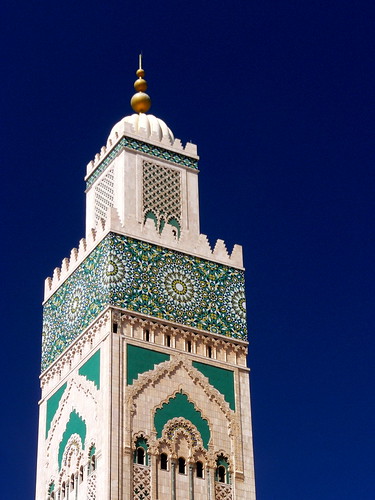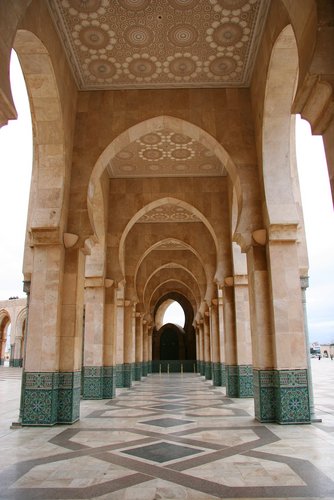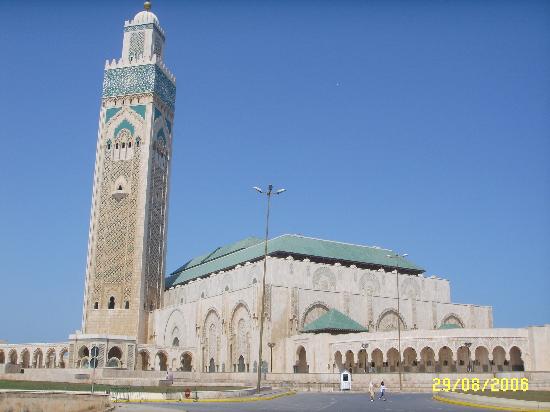Capacity(worshippers): 105,000
Area: 90,000 m2 (970,000 sq ft)
Area: 90,000 m2 (970,000 sq ft)
The Hassan II Mosque (Arabic: مسجد الحسن الثاني), located in Casablanca is the largest mosque in Morocco and the third largest mosque in the world after the Masjid al-Haram (Grand Mosque) of Mecca and the Al-Masjid al-Nabawi (Prophet's Mosque) in Medina. Designed by the French architect Michel Pinseau and built by Bouygues.[1] It stands on a promontory looking out to the Atlantic, which can be seen through a gigantic glass floor with room for 25,000 worshippers. A further 80,000 can be accommodated in the mosque's adjoining grounds. Its minaret is the world's tallest at 210 m (689 ft).
Characteristics
Built on reclaimed land, almost half of the surface of the mosque lies over the Atlantic water. This was inspired by the verse of the Qur'an that states "the throne of God was built on water". Part of floor of this facility is glass so worshippers can kneel directly over the sea; above, spotlights shine at night from the top of the minaret toward Mecca. These features were specifically requested by King Hassan II, who declared, "I want to build this mosque on the water, because God's throne is on the water. Therefore, the faithful who go there to pray, to praise the creator on firm soil, can contemplate God's sky and ocean."
It also includes a number of modern touches: it was built to withstand earthquakes and has a heated floor, electric doors, and a sliding roof.
The mosque displays strong Moorish influence and the architecture of the building is similar to that of the Alhambra and the Great Mosque of Cordoba in Spain. This and the old Tin Mal Mosque are the only mosques in Morocco open to non-Muslims. Non-Muslims may view the interior on hour-long guided tours that depart several times daily.
Works
Work on the mosque was commenced on 12 July 1986, and was intended to be completed for the 60th birthday of the former Moroccan king, Hassan II, in 1989. However, the building was not inaugurated until 30 August 1993.
All of the granite, plaster, marble, wood, and other materials used in its construction were taken from around Morocco, with the sole exceptions of some white granite columns and the glass chandeliers, both of which come from Italy. Six thousand traditional Moroccan artisans worked for five years to turn these raw materials into abundant and incredibly beautiful mosaics, stone and marble floors and columns, sculpted plaster moldings, and carved and painted wood ceilings.













2 comments:
That is the best Technology we all have now.
Post a Comment